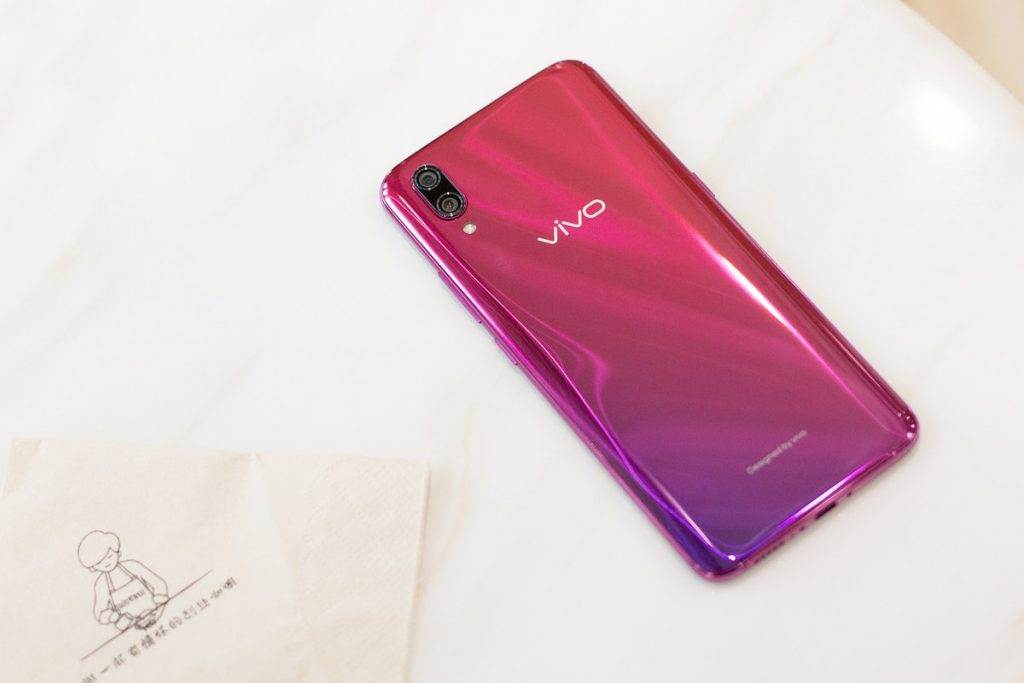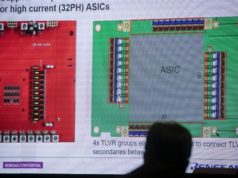In the smartphone industry, the progress of Chinese companies is obvious to all. And the development refers to all aspects, including design, hardware, and innovations. VIVO is one of the best examples of this.
Earlier this year, VIVO released the world’s first genuine full-screen smartphone in face of the VIVO NEX. Later, the company launched the next X series handset, the VIVO X21, which is known for not only the screen fingerprint recognition but also for great camera capabilities. But all smartphone vendors have accelerated the pace of launching new models. And VIVO is no exception. On September 6, the new annual flagship was released, namely the VIVO X23.
Many things have been changed. Now VIVO flagships don’t sport the latest Qualcomm chips. But they come with many innovations concerning the appearance, various functions, and AI. We are going to discover all the selling points of this amazing handset.
With the emergence of glass bodies, the smartphones have become more artistic. Now you won’t find many monotone back panels. They use the gradient effect. VIVO was one of the firsts to come in with such an approach.

The VIVO X23 adopts the same technology. So the phone’s fuselage shows various colors at different angles of light. This creates a three-dimensional sense and rich color expression. That’s why many call it ‘spiritual.’

However, the fuselage is designed with a double-sided glass body structure. The front panel is covered with a 2.5D glass, while the back uses a 3D glass. The middle frame has become narrower, which makes it visually light.
If the back of the VIVO X23 looks like the previous model, the front side differs completely. The VIVO X21 was using the much-popular notch screen. But the VIVO 23 adopts a drop screen. It is 6.41 inches with an aspect ratio of 19.5:9. This OLED screen has a resolution of 1080 x 2340 and supports the DCI-P3 wide color gamut.

In order to make it merge with the back panel, there are only two openings seen on the front. They are the front camera sensor and the earpiece.

Thanks to the improved thickness control of the middle frame and the improvement of the packaging technology at the bottom of the screen, the VIVO X23 also takes into account the color on the front screen border and merges them carefully. Of course, the four R angles of the screen correspond to the R angles of the fuselage and the curvature of the water droplets.

As for the official data, the top border of the VIVO X23 is 2.15mm, the left and right borders are 1.76mm, and the lower border is 3.8mm. The screen ratio is 91.2%.

All latest VIVO phones come with the Jovi Smart Assistant in the system. So the manufacturer has added a dedicated ‘AI’ button to the left side of the fuselage. At the same time, the right side of the fuselage carries the volume rocker and the power button.

This time, the VIVO X23 placed the 3.5mm headphone jack on the top and placed the SIM card on the bottom of the fuselage. However, it should be noted that this phone does not support TF memory card expansion. You have to use the built-in 128GB storage.

There are two color options, including Magic Night Blue and Phantom Violet. We are reviewing the latter.
The VIVO X23 runs on Funtouch OS 4.0 system based on Android 8.1 deep customization, which has not changed much in the visual experience or operational logic.

Generally, it is still based on a simple and fresh design style, following the flat and lightweight layout elements. But in the system interface or in the operation logic, it continues the previous easy-to-use, high-practical, and convenient approach. After all, Funtouch OS has integrated many useful functions in the system.
If you remember, there is a separate AI button even on the VIVO NEX. It is put there to quickly activate Jovi smart voice assistant and other functions related to AI. The VIVO X23 comes with something like that, but in terms of functions and experience, it has been fully upgraded.

A short press will open the smart map, while a long press will wake up the voice assistant. The interface between the smart map function and the previous version has not changed much. But this one comes with a more comprehensive service choice. It includes a help information after identification, adds relevant information to the system reminder, and can also match the smart scene to achieve more convenient operations.
As for the Jovi voice assistant, the major update has been ushered in. In addition to simple voice operations, it enables understanding of natural language and complex logic levels, as well as to implement relevant voice commands in third parties. You can teach Jovi to do a series of functions through the ‘My Teaching’ and ‘Command Square’ functions. Moreover, you can turn a series of ‘human’ operations into ‘smart’ operations.

Following the previous ‘Game Assistant’, the VIVO X23 comes with an upgraded version and brings a new ‘Game Box’ feature. It can automatically pop up the game assistant interface to make related settings when the game is started, and automatically optimize CPU performance and memory calls. At the same time, it has the e-sports mode 2.0 function and adds a few functions of touchscreen optimization – smart performance adjustment, background application optimization, and smart temperature rise strategy.

Quite interestingly, the ‘Game box’ function of the VIVO X23 can realize the background hook function. Thus, the game can be cut to the background to keep the game running normally without dropping the line, and it does not affect the foreground video, Weibo, and other application operations.
According to VIVO, the VIVO X23 features the ‘Twin Turbo Acceleration Engine’ function, which ensures the stable operation of the smartphone in daily use and games through the VIVO system acceleration engine and game acceleration engine. Then, it realizes the interconnection between hardware and software to achieve comprehensive, systematic improvement and acceleration of performance, network, heat dissipation, and standby.
At the beginning of this year, VIVO officially made the screen fingerprint technology available on various models. The VIVO X23 uses the fourth generation of this technology. Compared with the first three generations of screen fingerprint recognition options, the VIVO X23 uses the latest ‘photo-fingerprint unlocking’ technology, which is upgraded at both hardware and software levels, resulting in a faster and safer fingerprint unlocking experience.

According to VIVO, the X23 uses the fourth generation of photoelectric screen fingerprints. The hardware uses a F/1.5 aperture and 750ppi screen pixel density identification module. In addition, the software enhances the fingerprint image to remove noise, de-filter, and the process of feature point extraction and matching is optimized one by one. The unlocking efficiency is improved a lot.
According to the official introduction, the X23’s unlocking speed is 40% higher than the X21, and it takes only 0.35 seconds to unlock.
In terms of the actual experience, the screen fingerprint unlocking efficiency of the VIVO X23 has moved closer to the traditional capacitive fingerprint recognition. So we can state, after the optimization of the first three generations of this technology, the fourth-generation screen fingerprint function has completely replaced the previous capacitive fingerprints and has been perfectly adapted in function. In addition, the X23’s system has added a new unlocking effect, making the unlocking process particularly powerful.
In addition to the photoelectric fingerprint unlocking, the VIVO X23 also integrates a ‘zero-light face recognition.’ Its biggest feature is the integration of infrared light at the camera and the addition of a hidden infrared fill light at the drop screen. Honestly, we didn’t feel any difference between this and the previous face unlocking options of VIVO phones. After all, this is the same as the previous face recognition of X21.

The most obvious difference is the ‘circular effect’ when the face recognition is unlocked. When it happens, a circular motion will appear around the water drop screen to enhance the sense of technology.
With the advantage of ‘backlighting and clear photos’, the VIVO X20 introduced new fields in the history of smartphone photography and made it a place for various brands. As for the VIVO X23, this feature has been upgraded as well. And this is the first model to be equipped with the ‘Super HDR’ technology, which was announced in March this year.

In terms of functions, the ‘125° super wide-angle camera’ function is added to the rear camera. In the previous generation, there was an upgrade of the camera function and AI camera function, including the Brilliance Camera, Body Camera, Portrait Light Effect, AI Scene Camera, AI Malformation Correction, and so on.

As for camera imaging hardware, the VIVO X23 uses a 12MP sensor both in front and rear. With full-pixel dual-core focusing technology, it can achieve 24MP resolution. Secondly, the rear main image head uses the Sony IMX363 sensor to provide a F/1.8 aperture, while the front one comes with a F/2.0 aperture. In addition, the back camera comes with the secondary 13MP camera for ‘125° super wide-angle camera.’
When taking photos daytime, the imaging performance of the VIVO X23 is worthy of recognition. It continues the traditional style of the past and has a good performance for the details. In the backlight or high contrast style scene, it is also possible to control the light and dark parts of the screen, showing a good picture atmosphere.

As for the indoor shooting performance, the whole picture is relatively good and has a slight brightening effect. After the intervention of the AI photo, the color style of the whole picture is not reconstructed, but the picture tends to be true and delicate. The photo…







